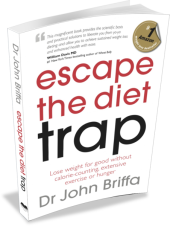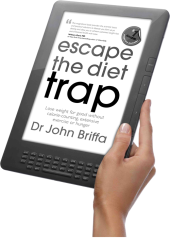The concept behind screening for cancer is that earlier detection will lead to more timely and more effective treatment. However, objective analysis tends to reveal that, generally speaking, large numbers of people need to be screen for one life to be saved from the disease being screened for. For example, using mammography as an example, it seems that for every 10,000 women screened over a 20-year period, 43 lives are saved [1]. Mammography is recommended every 3 years in the UK that means it would take about 70,000 mammograms to save those 43 lives. Another way of expressing this is that for one life to be saved, more than 1,600 mammograms must be performed. I am not glib about the lives saved through mammography, but it is clearly not an efficient intervention.
Also, cancer screening comes with some very real risks. The screening procedure itself may pose risks. For example, I recently saw a patient who almost died as a result of a blood borne infection (septicaemia) as a result of a biopsy that was advised as part of a screening for prostate cancer.
Another potential harm can come from ‘false positives’ – tests results that suggest a problem when, in fact, there is nothing wrong. If nothing else, false positives can cause considerable psychological distress for the person who has been screened, as well as maybe people close to them.
The last major cause of potential harm from screening is referred to as ‘overdiagnosis’ – essentially treatment for a cancer that would never have bothered the individual over the natural course of their life.
The British Medical Journal has recently published a review concerning the adverse effects of cancer screening [2]. The study assessed the percentage of studies on screening that quantified the known risks. In all, 198 articles were assessed. Negative ‘psychosocial’ consequences were only reported in 9 per cent of these. The results for false positive results and over-diagnosis were even worse (4 per cent and 7 per cent respectively).
In other words, studies concerning screening rarely quantify its important risks.
It occurs to me that this finding may be symptomatic of the culture in cancer screening, where the focus has traditionally been on the supposed benefits, with little discussion of the potential downsides. There has been a vogue for these potential problems not to be shared transparently with people. As a result, screening is sometimes presented to individuals as a ‘no-brainer’.
This has particularly been the case with mammography, it seems, though more recently the failure for women to be properly informed has been highlighted by some doctors and researchers. As a result. The breast cancer screening leaflet for women in the UK was updated earlier this month. But, already, it has attracted criticism for still not giving women access to vital information [3].
Susan Bewley, professor of obstetrics at King’s College London, has told the British Medical Journal that the leaflet does not contain crucial information that for every 15 women who are given a diagnosis of breast cancer through screening and who will undergo treatment, only one life will be saved. In addition, though, three women will end up being treated unnecessarily. According to Professor Bewley, the leaflet does not explain the harms of screening and also overlooks the fact that women who undergo it are at increased risk of undergoing unnecessary mastectomy.
Practically everyone I talk to about the limitations and hazards of cancer screening is quite surprised and sometimes even shocked by the facts. I suspect we have a long way to go before the general indoctrination about the ‘benefits’ of cancer screening are balanced with information about its limitations and hazards. But it’s only once someone is fully aware of the facts that they are in a position to judge whether cancer screening is right for them. It most certainly is not a no-brainer it is often presented to be.
References:
1. Hawkes N. Breast screening is beneficial, panel concludes, but women need to know about harms. BMJ2012;345:e7330
2. Heleno B, et al. Quantification of harms in cancer screening trials: literature review. BMJ 2013;347:f5334
3. Kmietowicz Z. New breast screening leaflet still denies women the full picture, says critic BMJ 2013;347:f5735 [hr]
[box style=”rounded” border=”full”]
Dr John Briffa’s best-selling ESCAPE THE DIET TRAP – lose weight without calorie-counting, extensive exercise or hunger is available in the UK and US
“This magnificent book provides the scientific basis and practical solutions to liberate you from yo-yo dieting and allow you to achieve sustained weight loss and enhanced health with ease.”
William Davis MD – #1 New York Times bestselling author of Wheat Belly
To read some of the dozens of 5-star reviews for this book [button link=”http://www.drbriffa.com/amazon-reviews-for-escape-the-diet-trap/” color=”silver” text=”dark” window=”yes”]click here[/button]
To buy a paperback copy of the book from amazon.co.uk [button link=”http://www.amazon.co.uk/Escape-Diet-Trap-John-Briffa/dp/0007447760/ref=tmm_pap_title_0?ie=UTF8&qid=1324815918&sr=1-1″ color=”orange” window=”yes”]click here[/button]
To buy a kindle version of the book from amazon.co.uk [button link=”http://www.amazon.co.uk/Escape-the-Diet-Trap-ebook/dp/B005ODY0RW/ref=tmm_kin_title_0?ie=UTF8&qid=1324815918&sr=1-1″ color=”orange” window=”yes”]click here[/button]

To buy a print copy of the book from amazon.com [button link=”http://www.amazon.com/Escape-Diet-Trap-calorie-counting-extensive/dp/0957581602/” color=”orange” window=”yes”]click here[/button]

To buy the kindle version of the book from amazon.com [button link=”http://www.amazon.com/dp/B00BLQ40QM” color=”orange” window=”yes”]click here[/button]
[/box]